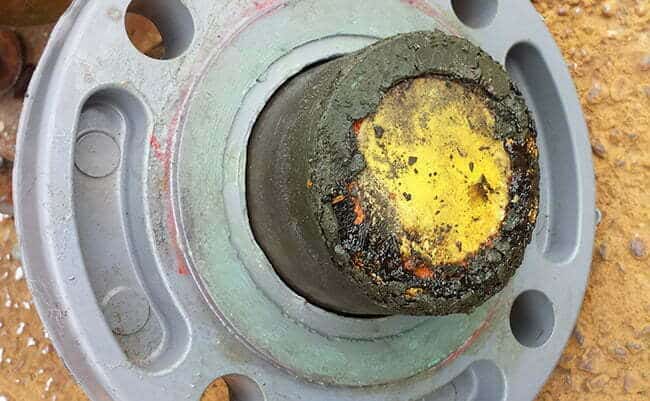 Maintenance is important, but it’s often hard to quantify. How much time does maintenance take? How often does your system need it? Does maintaining one part necessitate a complete system shut down? What does that represent in lost income because your system is not making product? Maintenance is important, but minimizing maintenance is even more important.
Maintenance is important, but it’s often hard to quantify. How much time does maintenance take? How often does your system need it? Does maintaining one part necessitate a complete system shut down? What does that represent in lost income because your system is not making product? Maintenance is important, but minimizing maintenance is even more important.
Maintenance is also important for your sensors. While everyone (yes, us, too!) would really like for sensors to maintenance free for life, reality dictates that all equipment needs a check-up from time to time. It’s true for pumps and motors, and it’s true for sensors.
So, when’s the last time you gave your ultrasonic sensor a checkup?
Your ultrasonic sensor has three specific enemies: corrosion, buildup, and extreme temperature changes. The while all three relate to the general environment of the sensor, first two are linked directly to the substance being monitored (for sensors within an enclosure, such as a tank). If your sensor has sustained exposure to corrosive fumes, or solid or liquid buildup is likely to form on your sensor, then preventative maintenance must be scheduled at regular intervals. A sensor exposed to extreme temperature changes may have condensation or even ice crystals form on the face of the sensor.
Let’s review the basics. In order to operate properly, an ultrasonic sensor needs a clear path from the transducer face to the surface it is monitoring. If there is some kind of solid buildup or liquid condensation on the face of the transducer, your sensor’s readings will be noticeably off.
But what about the sides of the transducer? If your ultrasonic sensor has an extruded face, the sides of your transducer can also be susceptible to buildup. And since the ultrasonic waves aren’t travelling out those sides, you won’t have erroneous readings to tip you off to the presence of that buildup. Which means it’s not too big of a problem unless, A, the buildup is corrosive and will eat through the side walls of the sensor; or B, the buildup is substantial enough that it will prevent you from removing the ultrasonic, or it threatens to extend into the path of the ultrasonic waves. If the buildup is potentially corrosive, let’s talk about chemical compatibility; there is a better sensor for you. If substantial buildup is a concern, then periodic visual inspections are in order.
Extreme temperature changes can affect your ultrasonic in two ways: first, as noted briefly above, temperature changes can cause condensation to form on the transducer face of an ultrasonic sensor, which leads to erratic and erroneous readings. Second, because sound waves physically travel through air, changes in temperature and humidity change the speed at which the waves travel, which, in turn, affects the calibration of an ultrasonic sensor (i.e., distance = speed * time, so uncompensated change in speed means incorrect calculated distance).
So how does this impact maintenance? If your ultrasonic is subject to infrequent extreme temperature changes, you will probably want to recalibrate the sensor after an extreme event. However, if your sensor is subject to regular large temperature swings, you will want to do your initial calibration at a temperature as close to the regular or anticipate temperature as possible. For example, daily temperature swings in our home town of Logan, Utah, are in excess of 30 degrees Fahrenheit, for June through September. Rather than recalibrate at the peak temperature of every day, it would be better to calibrate an outdoor sensor during the mid-morning or evening, close to the average daily temperature.
Another possibility is temperature gradient between the sensor and the target substance (such as a sensor on a bridge measuring cold river water. The water temperature will change the temperature of the air close to the surface of the water, so the ultrasonic sensor needs to be calibrated to account for this.
Some of you (yes, I can see your hands) want to know if ultrasonic sensors with temperature compensation need to be recalibrated in these situations. After all, that’s the point of temperature compensation, right? Yes and no. Temperature compensation does help mitigate the effects of changing temperatures. It’s especially helpful for situations where a sensor penetrates an enclosure kept at a temperature significantly higher or lower than its surrounding environment. But temperature compensation is not a magic bullet; it doesn’t solve every problem.
And that’s where we come back to the Application Question. The more details you can use to accurately describe your application when you are looking for an ultrasonic sensor, the better matched your sensor will be. Whether you are looking at corrosive or non-corrosive chemicals, foam, vapors, or splashing sludge, a high or low isolated temperature, or outdoor, exposed situation, all of these details are relevant when choosing your sensor. And the better matched a sensor is to its environment, the less maintenance it will need.
Not sure if you’ve asked all the Application Questions for your ultrasonic sensor? Or wondering if an ultrasonic is even right for your measurement needs? Let our Measurement Experts help you explore all the options. Even if one of our sensors isn’t the right answer, you can be sure that our expert advice will help you get the best sensor for your situation.